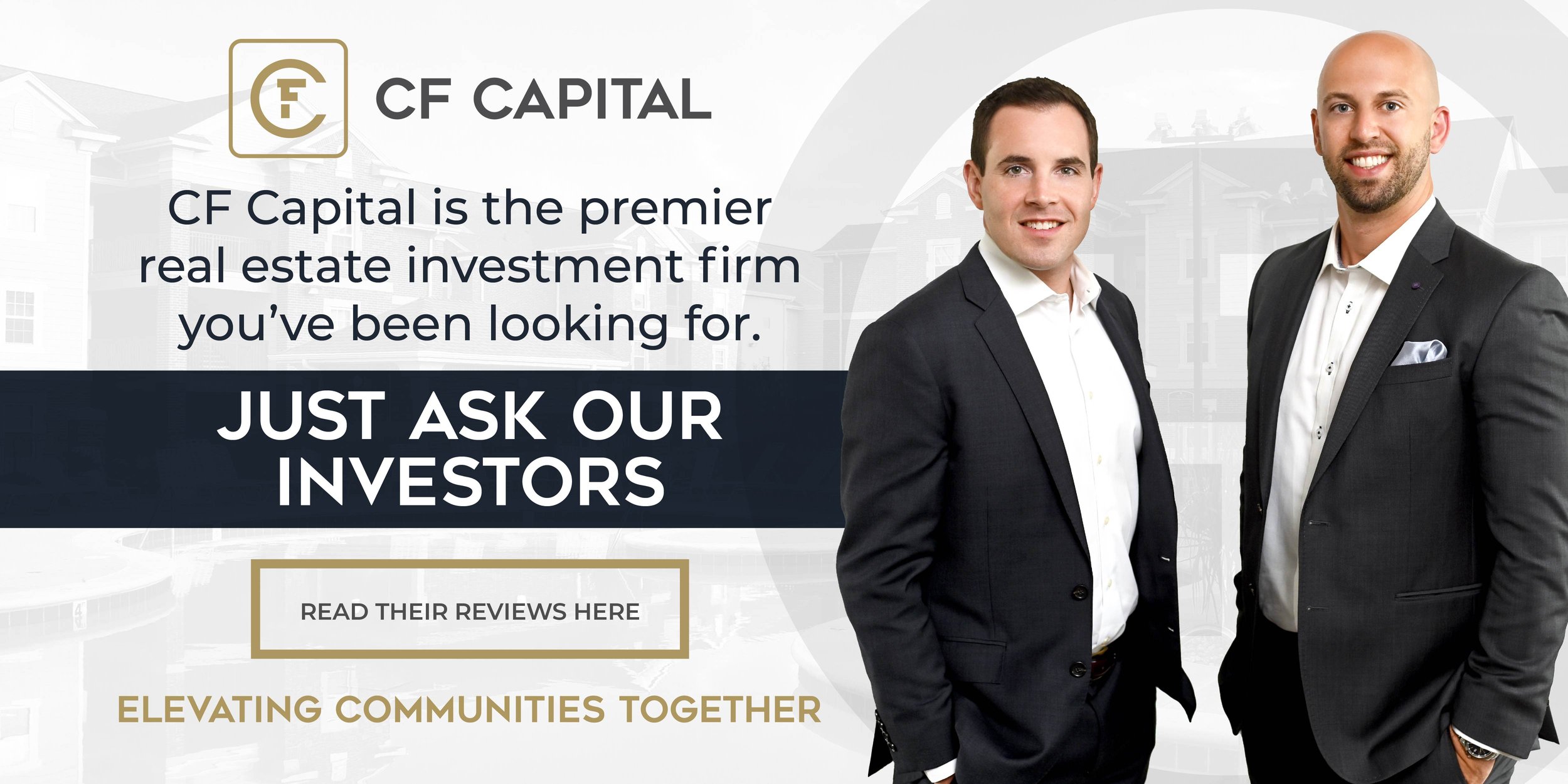When dipping your toes into the water of real estate investing and eventually jumping all the way in, it’s important to have a good grasp of what outcomes are attainable and measurable. This will help you set realistic goals.
Real estate investors have different goals based on many different factors. These factors may include their level of experience in investing, level of risk aversion (how tolerant they are of taking risk in exchange for the possibility of financial return), financial stability, and what their financial needs are in both the short and long term. For investors who are getting into real estate investing for the first time, goals should be related to learning as much as possible and building a profitable portfolio of investments.
Today we will dive into a few specific, realistic goals for new real estate investors and how to measure and track them.
Acquire Your First Assets
One of the most daunting things about getting into real estate is the thought of tackling the real estate acquisition process for the first time. This process is the largest deterrent for those who want to get into real estate investing — potential investors often quit before purchasing their first property. What most investors quickly realize after overcoming this obstacle, however, is that the subsequent properties quickly follow suit, and the acquisition of properties snowballs.
To keep from being too overwhelmed in the beginning, set realistic goals that you know you can achieve before you even get started. A great example of a realistic goal is obtaining one real estate property within a 12-month time frame. Break this goal down into smaller and more manageable bite-sized tasks that you can accomplish over time.
With a realistic goal in mind, the next step is determining the best way to measure and track progress toward your goal. One method for doing so is working backwards.
Work backwards from closing day to the day that you decided to invest in real estate and decide what action items must be accomplished at each point along the way. This may take some time at first, but doing it correctly will save you from wasted time and headaches in the long run. See the list below for an example of steps to take when acquiring your first investment property.
-
Find the right real estate agent (ideally one who specializes in investments)
-
Find an investor-friendly lender to work with and get a pre-qualification letter
-
Analyze 10 deals per day
-
Tour deals that meet investment criteria
-
Submit offer on best potential investment property
-
Negotiate final contract terms on the property
-
Send contract documents to the lender
-
Hire and schedule a property inspector to perform an inspection
-
Negotiate repairs or concessions
-
Inspect agreed-upon repairs upon completion
-
Await appraisal results
-
Receive final loan approval
-
Schedule closing day
-
On closing day, sign documents and wire funds to escrow account
-
Await notification that the seller has received funds — deal complete!
By breaking down the real estate investing process into an itemized checklist of smaller, more manageable tasks, you can transform what you once thought to be a formidable obstacle into a standard procedure. Once this process is refined, it can be executed smoothly as part of your well-formulated real estate investing process.
Build Muscle Memory for Analyzing Deals
Another realistic goal to have when getting into real estate investing is to build strong muscle memory when it comes to analyzing deals. At first, it may seem like you are double-checking all of your numbers and reference equations multiple times. You’re not crazy — this is completely normal.
The goal is to get to the point where you know whether or not a certain investment is worth looking into further without having to spend more than 30 seconds on it. To develop this skill, you must become an expert on your target market. You need to develop an understanding of any factors that will immediately eliminate properties from your investment search that might not get filtered out by your realtor or property search engine. These are often different for every market and based on your investing criteria. You’ll also need to practice the art of observing what rough numbers it takes to make a deal fit your investment parameters.
Often overlooked, this skill is an important one to add to your toolbelt as a new investor. It will not only save you dozens of hours in time but also provide you with the confidence to be decisive when good deals present themselves. Once refined, this muscle memory allows you to know whether the deal you are looking at is worth pursuing or just a dead-end lead.
How do you track deal analysis so that you can become better at it? The best way to accomplish this goal is to keep track of how many deals you are analyzing on a daily, weekly, and monthly basis, as well as how long you spend running numbers. Tracking these numbers over the course of your first month alone, you will see significant improvement in the number of properties you can analyze in the same amount of time as when you started.
A good mini goal to set initially is to analyze 3 deals per day. Once you have done this for several months, your ability to recognize a good deal in your market will be significantly improved. To level up your deal analysis skills, start analyzing deals outside of your market in addition to ones within — you will build up your skills and ability to underwrite properties regardless of where they are located.
Optimize Your Investment Portfolio
Another crucial and realistic goal for new investors is to run your investment portfolio profitably. Doing so is essential for continued real estate investing success, so mastering this skill as early as possible should be a top priority. Do not expect 90% cash-on-cash returns or unrealistic monthly cash flow — aim for profitability and realistic cash-on-cash returns.
By establishing good practices at the outset and leading with revenue-generating activities rather than those that produce expenses, the growth of your real estate portfolio will come naturally. Not only that, but the growth will more likely than not continue being profitable.
Following are some actions you can take to ensure you are optimizing your portfolio and maintaining profitability.
Establish a Schedule for Routine and Preventative Maintenance
By establishing a schedule for routine and preventative maintenance for your property, you will reduce the number of large failures and breakdowns that take place at your property. Repairs to the furnace, HVAC condenser and compressor units, water heater, and smoke and fire alarms can become a nuisance. However, routine is the key to ensuring profitability while also remaining in compliance with local fire and rental property codes.
A well-cared-for property will continue to take care of you and produce your desired amount of cash flow. Without maintaining it and making necessary repairs when they present themselves, the property is likely to fall toward disrepair until it reaches the point of condemnation.
Preemptively Get Quotes from Multiple Service Providers
When getting into real estate investing, it is recommended to put together a spreadsheet or notebook with three to five contacts for service providers in a variety of fields (e.g., electricians, plumbers, handymen, roofers, and so on). When something inevitably goes wrong and the first few people you call do not answer or return your calls, you will already have several backups at the ready who are capable of making a service call to your property. This ensures repairs are done quickly for a reasonable price.
Properly Screen Your Tenants
Another great way to stay profitable and prevent catastrophic expenses is to properly screen your tenants. Nightmare tenants who trash the property to the point of needing expensive repairs and require you to take them to court (or try to chase them down) are far too common. If you are unable to track them down, you still have to pay to repair your property. Take the time and spend a few extra dollars to properly screen your tenants upfront.
Set Up Your Tenants’ Rent Payment to Be Delivered via Recurring ACH
Setting up your tenants to automatically pay rent on a recurring basis via electronic transfer is an easy way to ensure that monthly rent is being paid on the same day each month. It also lets you know if there are insufficient funds for the payment. If this happens, you can take the necessary next steps, including reaching out to your tenant to resolve the situation without there being days of worry or awkward phone calls.
Remind Yourself to Send Out Lease Renewals
Finally, setting reminders for yourself to send out lease renewals with increased rent rates each year (minimum of 45 days prior to lease expiration) is a simple way to increase the odds of your tenants signing on for another year. Rather than waiting for them to notify you that they’re moving to a cheaper place, be the one to make the first move and send them a renewal that is already signed by you. Put the ball in their court and make it as easy as possible for them to renew with you.
Realistic Goals Make the Difference Between Failure and Success
It is a wise choice to set realistic goals when first getting into real estate investing. While it may be tempting to set your sights high, these realistic goals will encourage your confidence and keep you from crashing and burning early in your investing career.
In summary, you may choose to be an active real estate investor and set these types of activity goals for your own investing future. You may alternatively (or in addition) choose to invest alongside other deals passively with teams that execute on these types of activities on a daily basis. If that is the case, we’d invite you to explore those passive investing opportunities with CF Capital. You might be surprised at how much upside you can actually gain while obtaining none of the day to day headaches.
Until next time, thanks for reading!
——————————————————————————————————————————————————
Interested in partnering with us? Join our investors list here.












